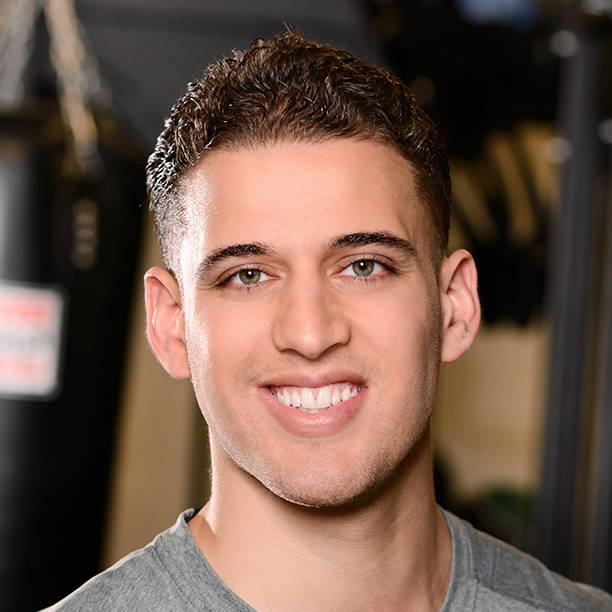|
According to the World Health Organization, there are more than 1.9 billion obese adults worldwide. It should come as no surprise, then, that fat loss is the most common fitness goal being chased by determined people. While losing fat isn't easy by any means, many people make the mistake of making it far more complicated than it needs to be.
To successfully lose weight, there are a few vital tools you need—and I want to equip you with all each and every one. Some are mental, some are physical and all of them are battle-tested to get results that last much longer than any 21-day detox.
In its most simple form, body fat is simply stored, unused energy. We store body fat subcutaneously (under the skin), intramuscularly (in the muscles), in bone marrow and around organs (visceral fat). When our bodies aren’t fueled properly or run out of energy, it can turn to these stored fat deposits for backup.
Storing fat in massively excessive amounts can take a toll on your quality of life, though. This affects a person’s appearance, confidence, happiness, daily mood, organ health, sexual health, mobility, stamina, cardiovascular health, motivation and so much more.
While people know these side effects, overcoming obesity can seem an insurmountable feat. Thousands of Pinterest tips, conflicting news stories, breaking research studies and past failures can all play a part in sapping someone's energy and determination to embark upon a new weight-loss journey. Getting started doesn't have to be such a confusing mess, though. With these three major keys, you can take charge of your future and develop a plan that works in 20 minutes or less.
EAT
There is one surefire way to lose fat and that is to put your body in a responsible caloric deficit.
A helpful strategy is to find out how many calories your body needs to function, otherwise known as your Total Daily Energy Expenditure (TDEE) There are several online forms that can generate your TDEE, a number that is influenced by the energy needed to break down food, energy burned during physical activity and the minimum energy needed to support your body's daily functions. Once you find your TDEE, simply eat 100 to 400 calories fewer than your TDEE results to put yourself in a caloric deficit.
Burning more calories than you consume puts you in a great position to lose fat. The key is to fuel your body instead of just grossly under eating, a mistake that many first-timers make. Try to stay within 500 calories of your TDEE if you’re in a deficit to avoid fatigue or other side effects of improper nutrition.
Fuel your body with lean protein (chicken breast, fish, egg whites, pork chops), nutritious carbohydrates (beans, rice, quinoa, oats, sweet potatoes, all fruits and all veggies) and healthy fats (avocado, olives, egg yolks, coconut oil and many nuts).
Develop a positive relationship with food. It fuels you. Eat a well-balanced diet full of nutrient-dense food choices and try to remain in a slight caloric deficit, and the fat will start to melt off.
TRAIN
While diet is important, it is just one piece of the puzzle—training is another huge piece. The secret ingredient to fat loss actually has nothing to do with fat or losing anything. It's all about gaining muscle and building strength.
Muscle is a far more demanding type of tissue than fat. It takes more energy to build and maintain muscle than it does to gain and maintain fat. By building muscle through strength training, you can give your body a better shot at burning fat. When muscles begin to grow, they require your body to fuel them with energy from your now stellar diet (see above) and your fat stores throughout the body.
You simply exchange fat for muscle. This is why you don’t want to "lose weight" but rather "lose fat." While you may not see a change on the scale, the mirror can tell a different story. And no, for the record, muscle doesn’t weigh more than fat. One pound is one pound. Muscle is, however, more dense than fat so you may appear leaner without actually getting lighter.
The training philosophy can be simplified into a really actionable plan. Look at what you’re doing, physically, right now in the gym. Now scrap it. Throw it away. Do something different. The best program out there is the one you’re not on right now. New and different stimulus to the body forces it to adapt faster and, in this case, build muscle.
There are eight key movement patterns that you need to train"
- Squat Pattern (Example 1, Example 2)
- Hip-Hinge Pattern (Example 1, Example 2)
- Upper-Body Pulling (Example 1, Example 2, Example 3)
- Upper-Body Pressing (Example 1, Example 2)
- Single-Arm or Single-Leg Movements (Example 1, Example 2, Example 3, Example 4)
- Running/Sprinting
- Jumping (Example 1, Example 2)
- Carrying (Example 1, Example 2)
If you find a way to include those movements in your program, you’re golden. Here’s what a sample workout week may look like. Aim to hit eight to 12 reps (keeping in mind that your last rep should be the last one you can perform with proper form) and around two to three sets total. Feel free to steal it.
Workout 1
- Squat Variation
- Upper-Body Pull
- Single Arm/Leg
- Core Exercise
- Jumping or Carrying Exercise
Workout 2
- Hip-Hinge Variation
- Upper Body Press
- Single Arm/Leg
- Core Exercise
- Sprinting or Carrying Exercise
Do each workout at least once per week, using the same exercises for four weeks. Keep notes of what you do and challenge yourself to get just a little bit better each time you do it. After four weeks, plug in new exercises to the template and repeat. Use the power of YouTube and some creativity to keep finding awesome new exercises to try.
RECOVER
The number one most powerful performance and results enhancer—and the one many people often neglect—is sleep and recovery. Sleep is free, it's awesome and everyone should take full advantage of it.
Challenge yourself to get seven to nine hours of quality sleep a night. When you start to catch some extra Z's, the training and eating part of the puzzle become easier because you'll have more energy and will feel encouraged to follow through on healthy habits.
A few tips that have helped me maximize my sleep include:
- Set a bedtime. It might sound hilarious because you’re not 10 anymore, but it works! Do some math and see what time you need to go to sleep in order to get eight hours, then do your best to avoid letting responsibilities or procrastination get in the way of you and your bed.
- Charge your phone away from your bed. Or at least don’t text in bed. The blue light from electronic devices makes it difficult for you to "shut down" and get quality rest.
- Never hit snooze. When your alarm goes off, get up immediately. The little five to 10 minutes of extra sleep you get after you smack that snooze button could actually interrupt your sleep cycle and leave you feeling far worse when you finally wake up. Plus, think about it like this: Snooze is procrastinating the entire day ahead. Do you really want the first thing you do every day to be procrastination?
It's also important to factor in rest days, just as you would workout days. You won't find any bonbons in these rest days, though—active rest days are great for giving your muscles time to recover with light exercise such as yoga or taking the dog on a leisurely walk around the neighborhood. Light activity will help with muscle repair and reduce any soreness you might be experiencing.
If you can make these puzzle pieces fit into your life, you will drop fat. You absolutely will live a healthier life in the long run. And most importantly, you will have the tools and the results to show people how you accomplished your goals and be able to help others do the same.
|




.png)

.jpg)

